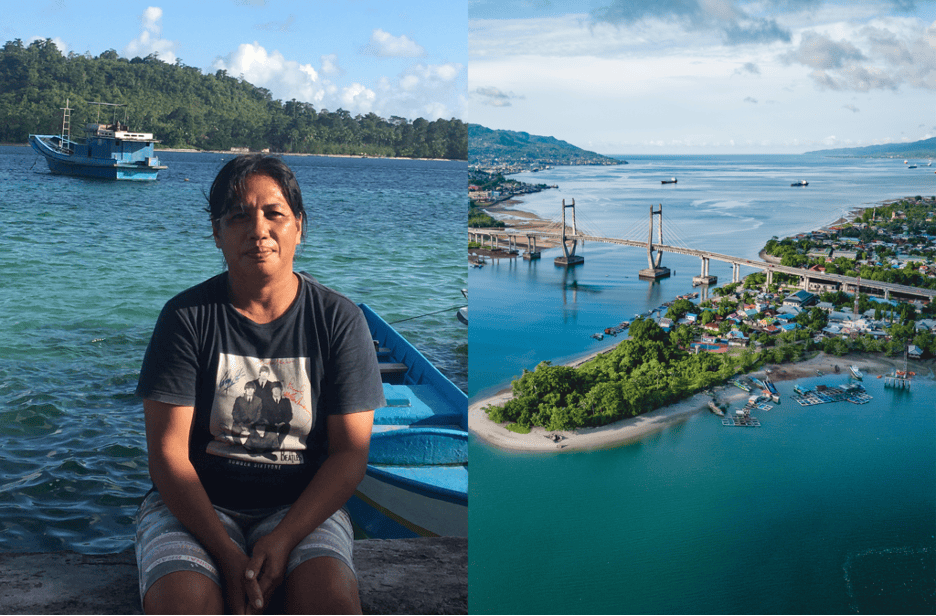As the world grapples with the accelerating effects of climate change, we are confronted by a harsh reality: financial inclusion and climate resilience are inextricably linked for women, especially those in the world’s most vulnerable regions. Yet, as COP29 unfolded earlier in November, progress on gender was disappointing. Despite global pledges to prioritize the most vulnerable, women’s financial inclusion—an essential pillar of resilience—remained sidelined due to discourse instead focusing on backtracking existing language. Now, with a meager $300 billion on the table from COP29, $1 trillion short of what developing nations were asking for, we still don’t know how much gender applies. Last we knew, only 55 national climate action plans explicitly mentioned gender equality.
This failure is glaring. The data is irrefutable: climate change disproportionately impacts women, and without the financial tools to cope, they face a future fraught with poverty and insecurity. There are 753 million women living in climate-vulnerable countries who are excluded from formal financial systems, leaving them ill-prepared to protect their livelihoods or recover from climate shocks. It’s a crisis that demands urgent action.
We know the numbers. We crunched them ourselves in our latest publication, “Finance, Climate, and Gender.” Women’s financial exclusion is not just a financial problem; it is a climate problem. Three out of four women without adequate financial services live in these climate-vulnerable regions. Nearly 880 million women lack access to quick relief payments after climate emergencies. Only 116 million people globally have climate-related microinsurance, and there’s a staggering 20% gender gap. Furthermore, 1.41 billion women in these regions don’t have formal savings, leaving them with no financial safety net when disaster strikes.
The climate emergency will only deepen this divide. By 2050, climate change could push 158 million more women and girls into poverty. Yet, amid these dire projections, global funding for climate initiatives that also focus on women stands at a shocking 0.01%. This gap in funding isn’t just a statistic—it’s a call to action. Without targeted investment in women’s financial inclusion, the green transition will be incomplete, and the most vulnerable will continue to bear the brunt of both economic and environmental crises.

But there is hope. When it comes to women in leadership roles, the research sings. A critical mass of women on a board leads not only to better climate outcomes but also to more innovation. At the political level, research shows clear linkages between women’s leadership and action to tackle climate change. For example, studies have found that countries with higher proportions of women in parliament are more likely to ratify international environmental treaties and have stricter climate policies. In business, gender-diverse firms tend to have better environmental reporting and climate governance than their peers and make more investments in renewable power generation and energy efficiency improvement.
When it comes to women customers, the story is no different. They are not passive victims of climate change. In fact, they are at the forefront of resilience, responding to climate crises, leading early recovery efforts, and driving sustainable practices in agriculture and natural resource management. Women are already creating adaptive, resilient communities. With the right financial tools, they can become the architects of climate solutions, not just survivors of climate disasters.
This is where the intersection of women’s financial inclusion and climate action becomes clear. Financial services such as savings, insurance, and access to credit are not luxuries—they are lifelines. In the past six years, Women’s World Banking has introduced 75 financial solutions across emerging markets, addressing the specific needs of women. We have seen firsthand how access to finance can turn vulnerability into resilience, enabling women to weather the storm and meet their needs. And financial solutions tackling both climate and gender already exist to learn from. Hear how one of our partner’s fintech solutions is insuring women farmers futures.
But we need more. More funding. More partnerships. More commitment to ensuring that financial systems work for women, not against them.

The conversation at COP29 highlighted the urgent need for gender-responsive climate finance. The draft decision included some mention of gender, but it fell short. Discussions did not adequately reflect the need to have gender-responsive actions. Women’s leadership in climate action must be fully recognized, supported, and funded. This means prioritizing investments in women-led grassroots organizations, ensuring that climate finance is accessible and impactful for those who need it most.
The time to act is now. We are armed with knowledge, we have solutions that work, and we are ready to scale them. But we cannot do it alone. Policymakers, financial institutions, investors, and civil society organizations must come together to close the gender financing gap. As leaders, we must use our platforms to advocate for change, especially in rooms where the conversation may seem the most daunting. We need more women in government, more female CEOs, and more role models driving the conversation on climate and finance. In a year that started with a COP Presidency failing to include even a single woman in its initial 28 member organizing committee before facing severe criticism and course-correcting, we have witnessed a nearly synchronized global failure on gender equity. If you are a leader—male or female—this is your moment. Your voice, your investment, and your leadership can make a difference.
In the coming decades, the challenges we face will only grow. But so too can the opportunities. Financially empowering women is not just about creating equity—it’s about securing our collective future. It’s time to put the pieces together and create a resilient, green, and just economy that works for everyone.
As we close this chapter of our campaign on climate change and women’s financial inclusion, we invite you to join us. Together, we can empower these 753 million women to overcome the barriers holding them back and ensure that no woman is left behind in the fight against climate change.
